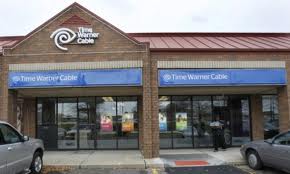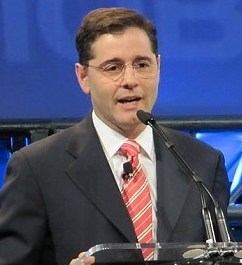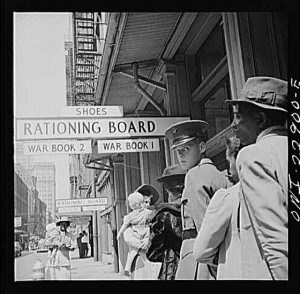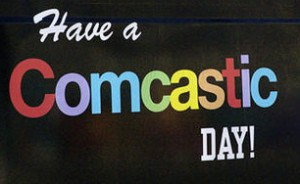I always wondered why some Time Warner Cable stores maintain a very visible security presence, often with a uniformed guard stationed in plain sight. This morning, I got my answer.
While visiting a local cable store to exchange a set top box, I ended up behind five other customers, with just a single representative on duty. Seated on the provided couch, I was well-positioned to hear the issues of customers in line before me. It was the usual pattern — a bunch of late-payers wondering how much of their $400 past due cable bill they needed to pay to reconnect service, a customer exchanging a troublesome remote control or turning in unneeded equipment, and one older “gentleman” who clearly spent his morning preparing for a personal indictment of Time Warner’s customer service.
He was in line right before me. I should have realized there was going to be a problem, considering he spent 15 minutes muttering under his breath and mocking the representative’s answers to other customers as he waited his turn.
His moment finally arrived, and he unleashed.
“How do you people sleep at night,” was his opening. “Time Warner Cable sucks.”
And they’re off….
For at least 10 minutes, the woman behind the counter took a relentless verbal, often personal lashing.
“I worked for a utility company and I would have been fired if I ever provided service as bad as yours,” was quickly followed by “do you actually train your people?”
It seemed, in-between the insults, this particular customer lost cable service the other day, called Time Warner’s automated attendant, and was erroneously told there was no reported service problem in his area. Finally reaching a live person, the customer service representative quickly repeated that, despite protests that “the whole street is out.”
Over the course of the day, the perturbed customer repeatedly called Time Warner to give regular updates on their conclusion there was no problem.
“There were Time Warner trucks on my street and you people have the nerve to tell me there is no problem,” relayed the man. “I’m glad I don’t have your phone service because even your own people told me not to get it because it was unreliable. I would not have been able to even call you then.”
But the final indignation was the customer’s perception a Time Warner Cable employee ordered him to stay home for a service call the next day.
“How dare you tell me what to do. You people wasted my time and yours and I never had this problem with Dish when I had them,” he lectured. “I don’t know how you guys even stay in business with crappy service like that and you lie to your own customers.”
The employee behind the counter had evidently been well-seasoned by prior encounters with angry customers. While never telling the man she understood his concerns, she did repeatedly tell him she was not the one telling him the things that obviously had upset him.
Other customers watching the display further back in line began to leave the store, noting the man showed no signs of drawing his angerfest to a close.
“I should just go back to Dish,” repeated the man. “You people are just awful and you always have been and you should be ashamed.”
 For a few moments, there was silence as the representative looked up information about the customer on her computer. That was her big mistake.
For a few moments, there was silence as the representative looked up information about the customer on her computer. That was her big mistake.
“I am going to back my truck up and just chuck my cable box through your window for all it is worth,” as the relative calm of the eye of Hurricane Angry Guy had now passed on by. “Screw all of you.”
Having self-satisfied himself with his venting, he stormed off slamming the store door open as hard as he could.
“Customer #110 is now being served at window 2,” proclaimed the automated voice.
That was me. I hesitantly approached the desk.
Initially defensive, the customer service person cut me off the moment I took a breath to speak and tartly asked for my phone number.
It should be obvious to any reader here that I am a relentless critic of some of the policies and decisions made by the management of large cable and phone companies like Time Warner Cable. I am also a customer, so technically I could feel entitled to unleash my concerns about the industry as a whole on any employee of the cable company. But that would be wrong.
Taking your frustrations out on a customer service representative that had nothing to do with creating a problem will not solve the problem. Hurling a tirade of personal, verbal abuse is simply unacceptable.
 If Time Warner Cable made the mistake, calmly discussing the problem without yelling at the representative would have probably netted the customer a customer courtesy credit and an apology. Asking the representative what she could do to alleviate or compensate for a problem gives them a chance to help. Putting them under a state of siege is a sure way to shut them down, hoping you will leave as quickly as possible.
If Time Warner Cable made the mistake, calmly discussing the problem without yelling at the representative would have probably netted the customer a customer courtesy credit and an apology. Asking the representative what she could do to alleviate or compensate for a problem gives them a chance to help. Putting them under a state of siege is a sure way to shut them down, hoping you will leave as quickly as possible.
In short, nobody deserves to be treated the way this representative was this morning.
Being affable got me a lot farther. The representative’s initial defensiveness quickly dissipated and she went out of her way to address concerns and even offered things I did not request. When it was all over, I thanked her for her help and she returned the courtesy wishing me a great day.
Some people believe being difficult and browbeating customer service will get them satisfaction. But I have found that remembering the “three P’s” of customer <-> customer service interaction work far better:
- Be polite. If you have a problem with your provider, don’t assign blame to the one person that might be able to alleviate the problem. Calmly explain what the company did wrong in your eyes and empower and encourage the customer service agent to be your ally to resolve the problem. Making things personal puts anyone on the defensive, which guarantees less interaction, not more. Treat people the way you expect to be treated.
- Be persistent. If the offered solutions don’t work for you, let them know in a calm voice that their suggested resolution is insufficient. Ask them if there is anything else they can do to resolve an issue or compensate you. If they seem unable to help, ask them if a supervisor could.
- Be persuasive. Reminding a customer service agent you appreciate their help and that, as a long standing customer, you want to preserve a positive attitude about your provider gives them the incentive to go further for you. If necessary, remind them that a happy customer stays a customer. An unhappy one leaves and tells everyone they know. Keep things business-like and keep your anger in check.


 Subscribe
Subscribe








